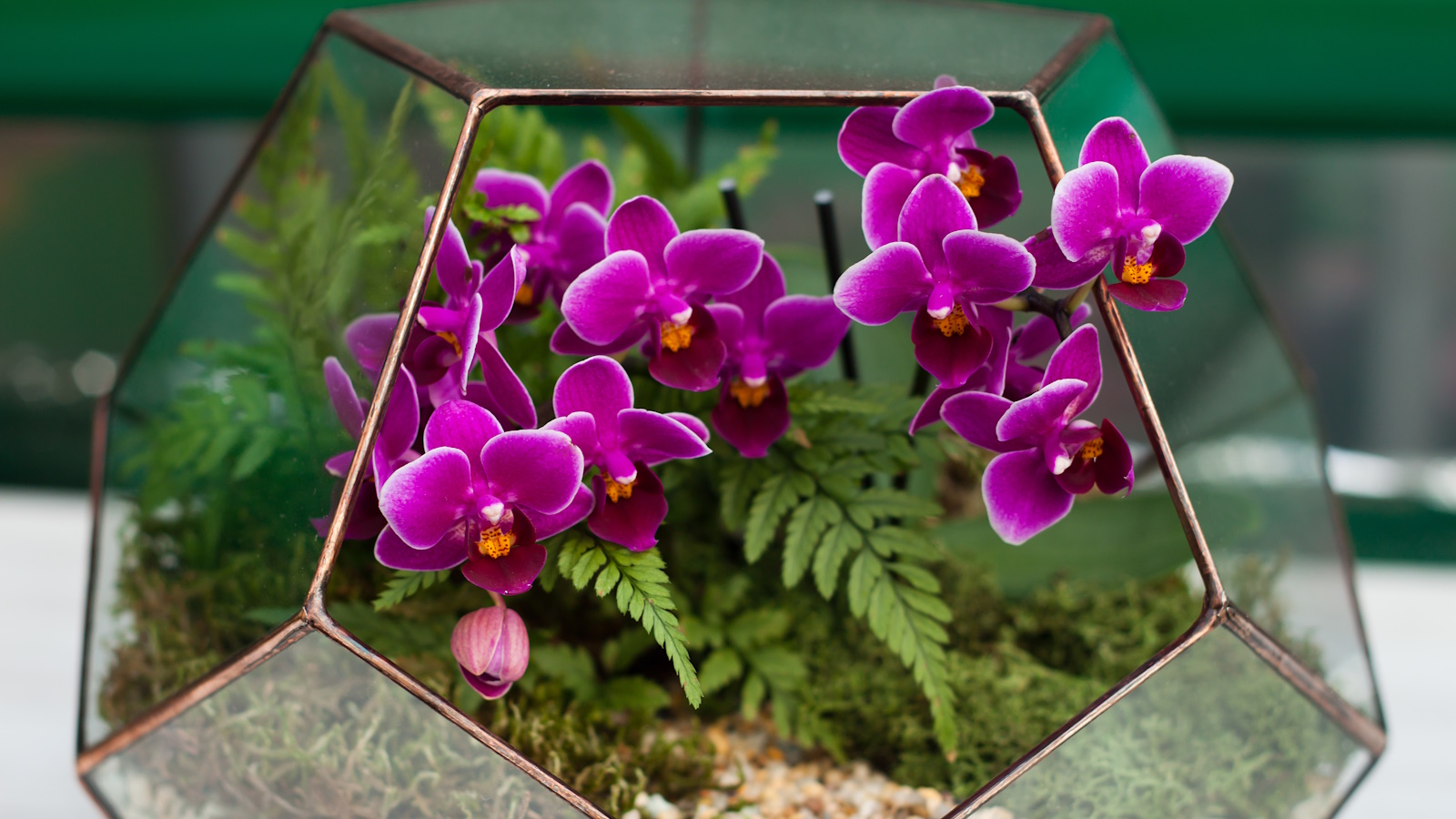
Terrariums have surged in popularity in recent years owing to their low maintenance nature, allowing city dwellers to create indoor gardens in the smallest of spaces. Add an orchid into the mix, and you can elevate your terrarium collection to make it super sophisticated.
Orchids will thrive in the small, enclosed environment of a terrarium, which works rather like a mini greenhouse. If you've struggled with these beauties in the past, an orchid terrarium could be the answer.
Although they are among the best indoor flowering plants, my track record with orchids is mixed, so I find it much easier to grow them in the controlled environment of a terrarium, where it's easier to monitor temperature, light, humidity, and airflow.
Terrariums are pretty much self-nourishing, and need very little maintenance. The water collects on the glass walls and trickles down to the plant, creating its own ecosystem. This means it doesn't matter if I forget to water it, making my orchid care tasks much easier.
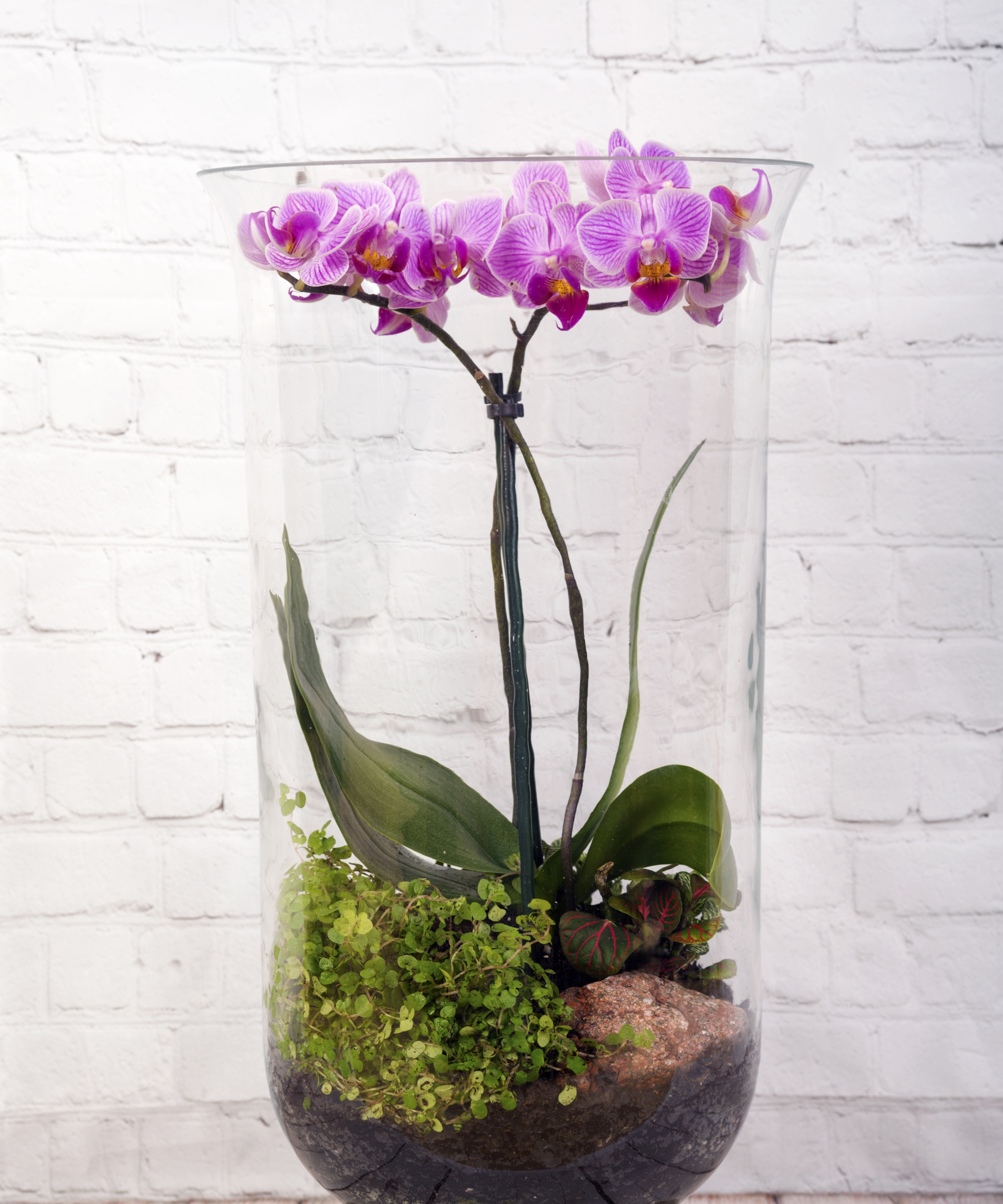
How to make an orchid terrarium in 6 easy steps
When considering how to make a terrarium for your orchids, first make sure you're up to speed on key care elements such as humidity and how to water your orchid, to get the best out of your plants.
When you're choosing a terrarium, take into account the growing environment. 'A fan favorite for centuries, orchids range from classic flowering beauties to exotic tropical specimens,' says Dan Jones of Terrarium Tribe. 'Each has its unique charm, but they also come with their specific requirements. Whichever orchids you choose, you’ll need to tweak your terrarium environment accordingly.'
Follow these simple steps so you can ensure your orchid terrarium becomes a head-turning display in your indoor garden.
1. Choose your orchid plants carefully
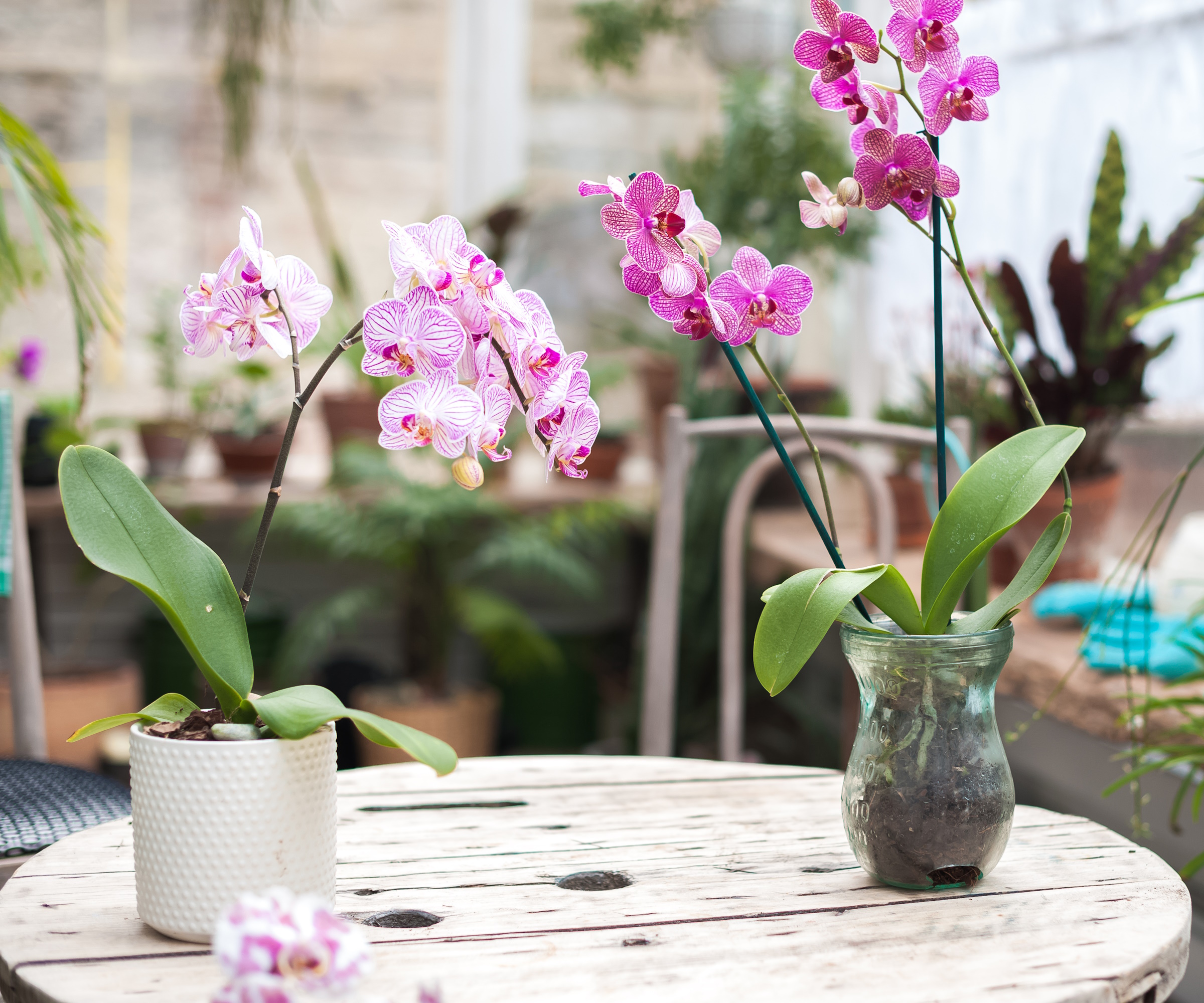
There are many different types of orchids to take your pick from. Choose orchid varieties that like high humidity, intermediate temperature, and low-light conditions. You also need to decide which variety of orchid is best if you're going for a closed or open terrarium, such as this stylish design available from Walmart.
It's important to pick miniature orchids to make sure they won’t outgrow the space and crowd out other any of your other terrarium plants.
'Some of the best miniature orchids for terrariums include Masdevallia, Platystele, Tolumnia, Dracula, Aerangis, Phalaenopsis, Angraecum, and Lepanthes,' says Anna Weston, founder of Orchid Bliss. 'They will not grow more than the size of your palm, and they love high-humidity environments, making them excellent plant materials for closed terrariums.'
Whichever variety of orchids you end up choosing, Anna suggests you do your research and select plants that prefer similar climates, which will improve your chances of success.
2. Decide whether you're including filler plants too
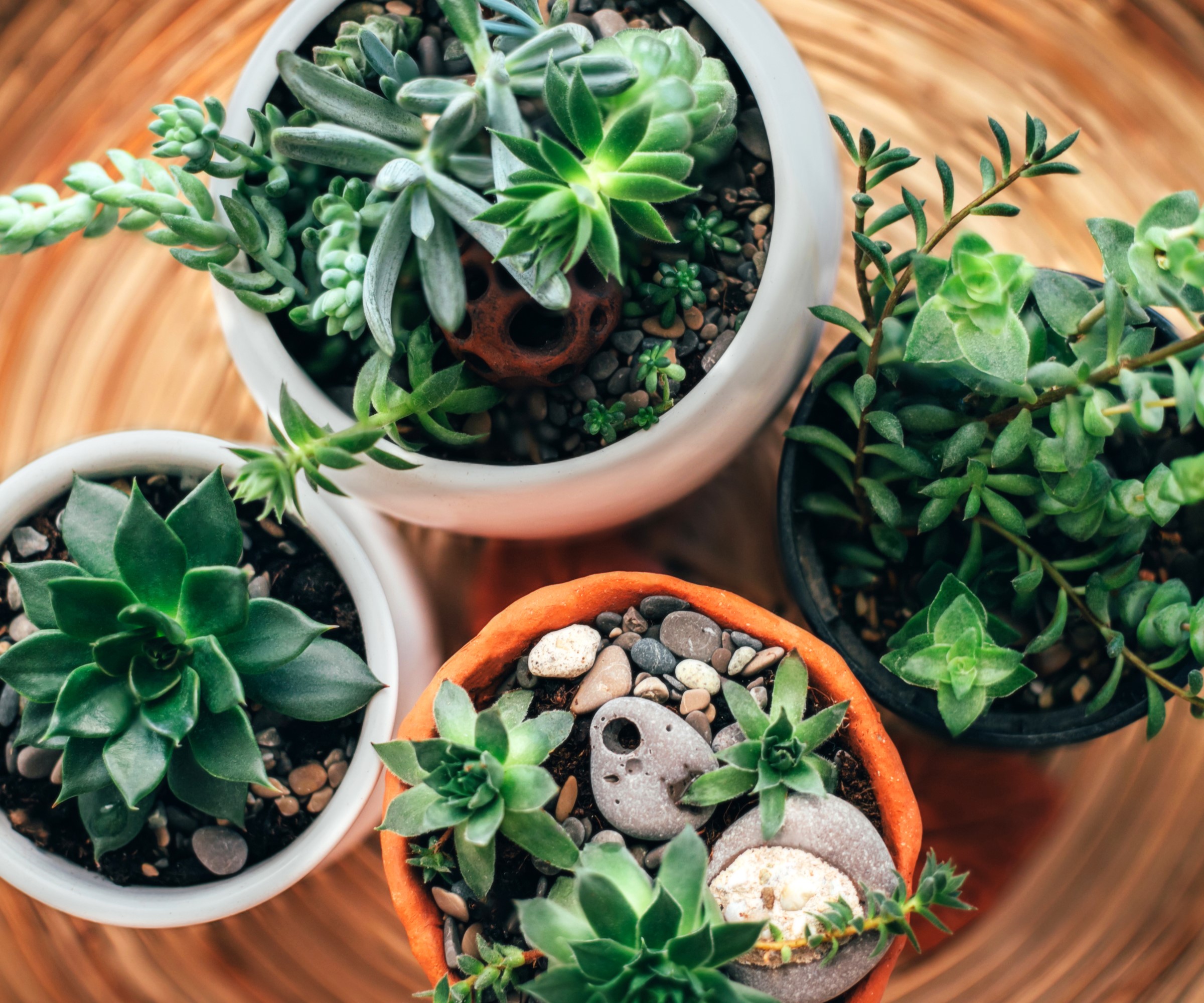
A single orchid or several smaller ones looks great in a terrarium planted up on their own. But you can also add small filler plants that like humidity to complement your orchid terrarium and create more of a mini-landscaped look. This also adds visual interest when your orchids aren't in bloom.
Opting for low maintenance indoor plants, such as succulents, that will go well with your orchid is always a good option. Choose plants that grow slowly and won't crowd the space such as small ferns, peperomia and air plants.
3. Prepare your orchid terrarium container
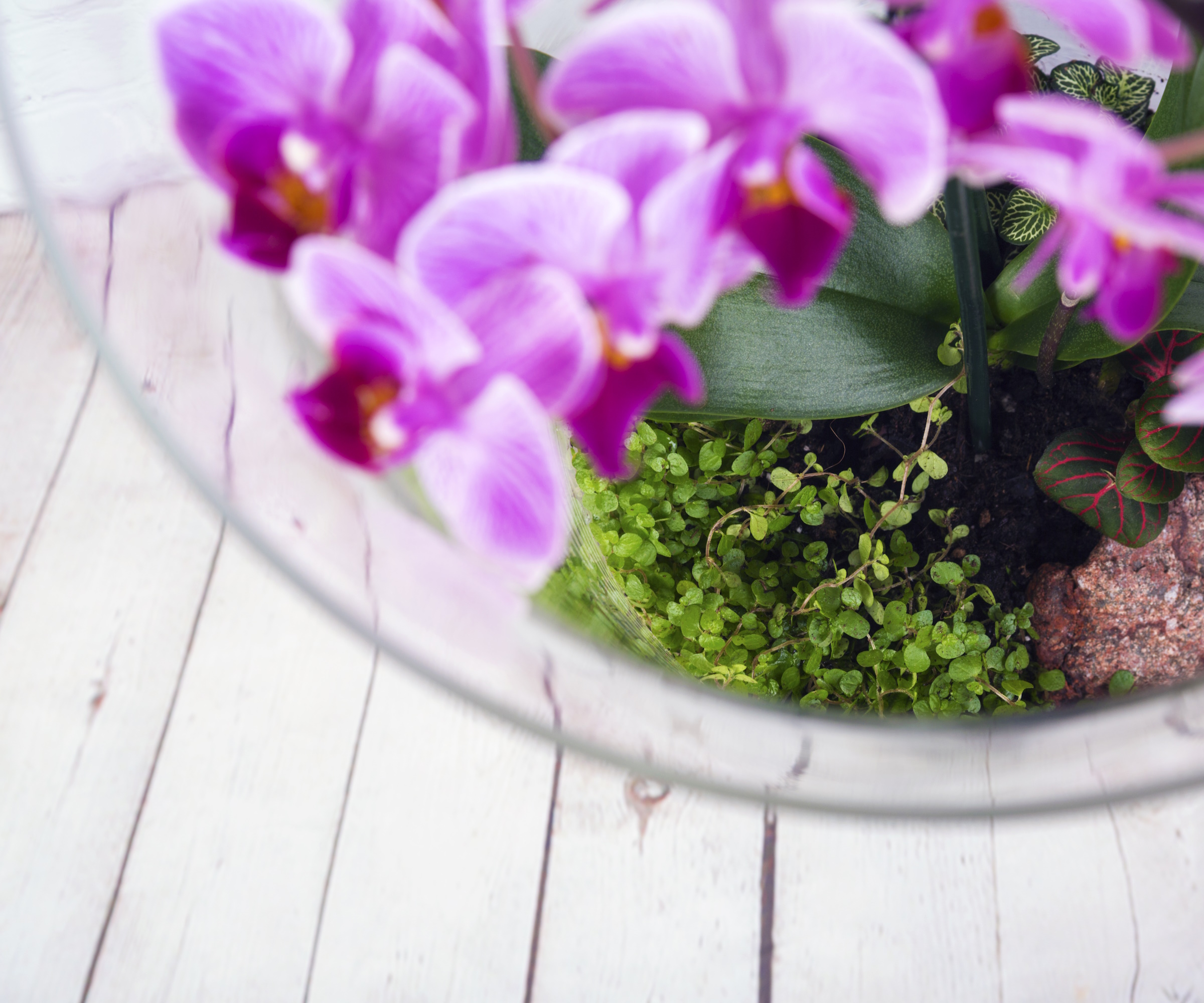
Make sure your chosen terrarium is thoroughly clean, especially if you have used it previously for planting. Neglecting to clean your chosen vessel is a common terrarium care mistake. This will avoid any possible problems later on as houseplant pests and diseases can spread quickly in a humid enclosed environment such as a terrarium.
Use mild dish-washing soap and rinse several times to make sure your terrarium is spotlessly clean and dry before using it for planting orchids.
Alternatively, to be absolutely sure, try using one tablespoon (15ml) of household bleach for 1 gallon (3.79 liters) of water to remove any residual traces of mold or fungus from any previous planting schemes. Rinse well and allow to dry thoroughly before planting.
4. Add a base layer
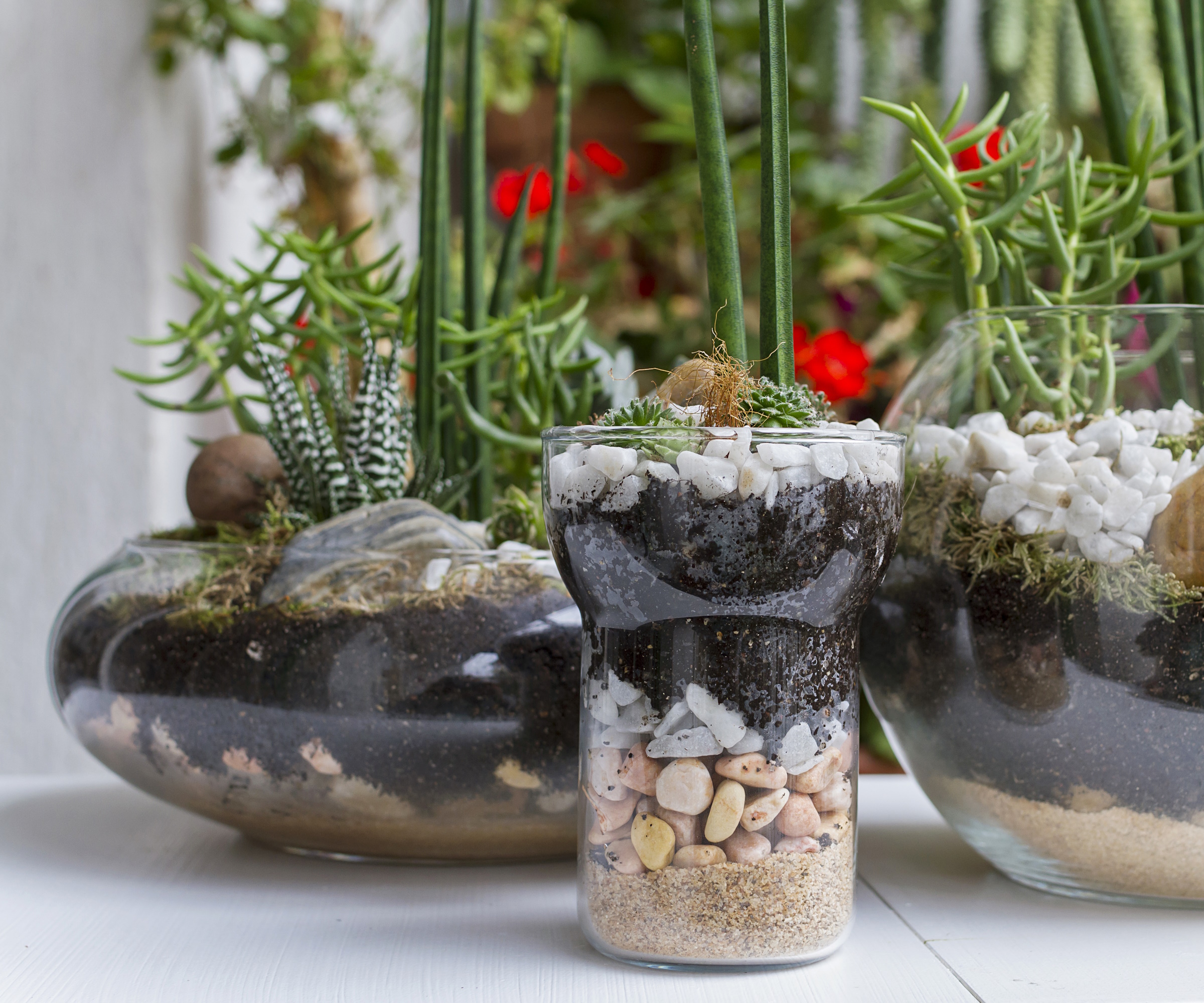
The next step for making an orchid terrarium is choosing what you're going to line the base with. This bottom layer is known as the substrate.
One popular option is to use a layer of small terrarium stones (available from Amazon) approximately 2in in depth at the bottom of the terrarium. Wash the stones thoroughly before adding them to the terrarium. If you chose to use stones add an inch of water too. This will provide the appropriate humidity level for your terrarium.
You can also use potting soil, but this is a messier option, and can introduce disease into the terrarium. If you do use the soil option, be sure to mist the terrarium thoroughly on a regular basis to add humidity.
5. Arrange your orchid and filler plants
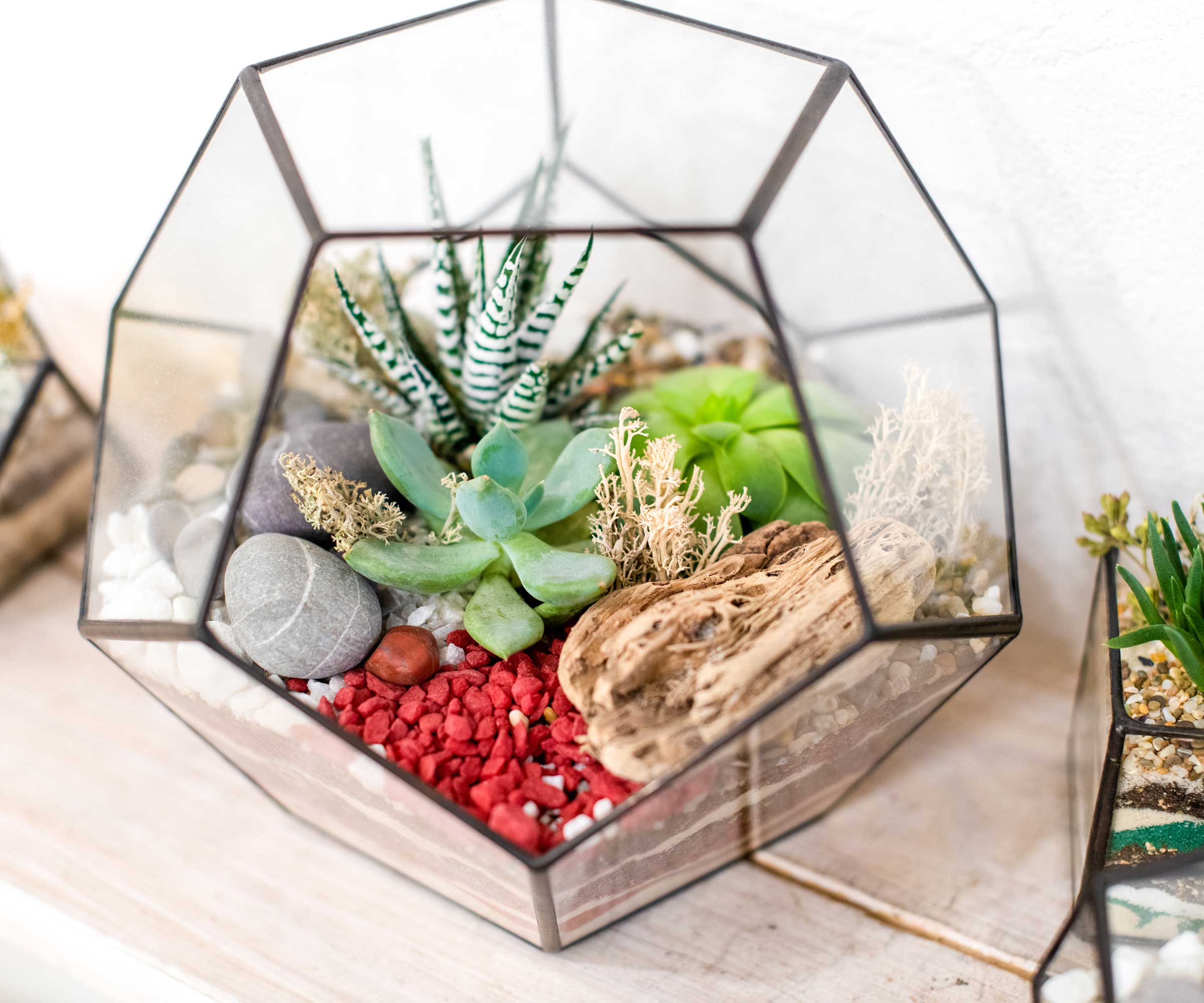
Your orchid should always be the focal point of your design. Anna Weston recommends keeping your orchids in their original pots.
'You might feel you should plant the orchids directly in the terrarium rather than keeping them planted in pots,' says Anna, 'but you run the risk of them dying. Orchids need their roots exposed to air, and growing them like this will not let them receive adequate airflow. Initially, the placements may look a bit awkward, but as the plants start to grow it should all come together in a couple of months.'
You can use moss to cover the orchid pots and give the terrarium a more natural finish. You can also use props such as small pieces of bark or driftwood to cover up the pots.
If you have chosen to use soil as your substrate, bury the orchid in its original pot and plant the companion plants directly in the soil, placing any larger plants behind the orchid and mini ones towards the front of your terrarium to create the most balanced effect.
6. Put your orchid terrarium in the right position
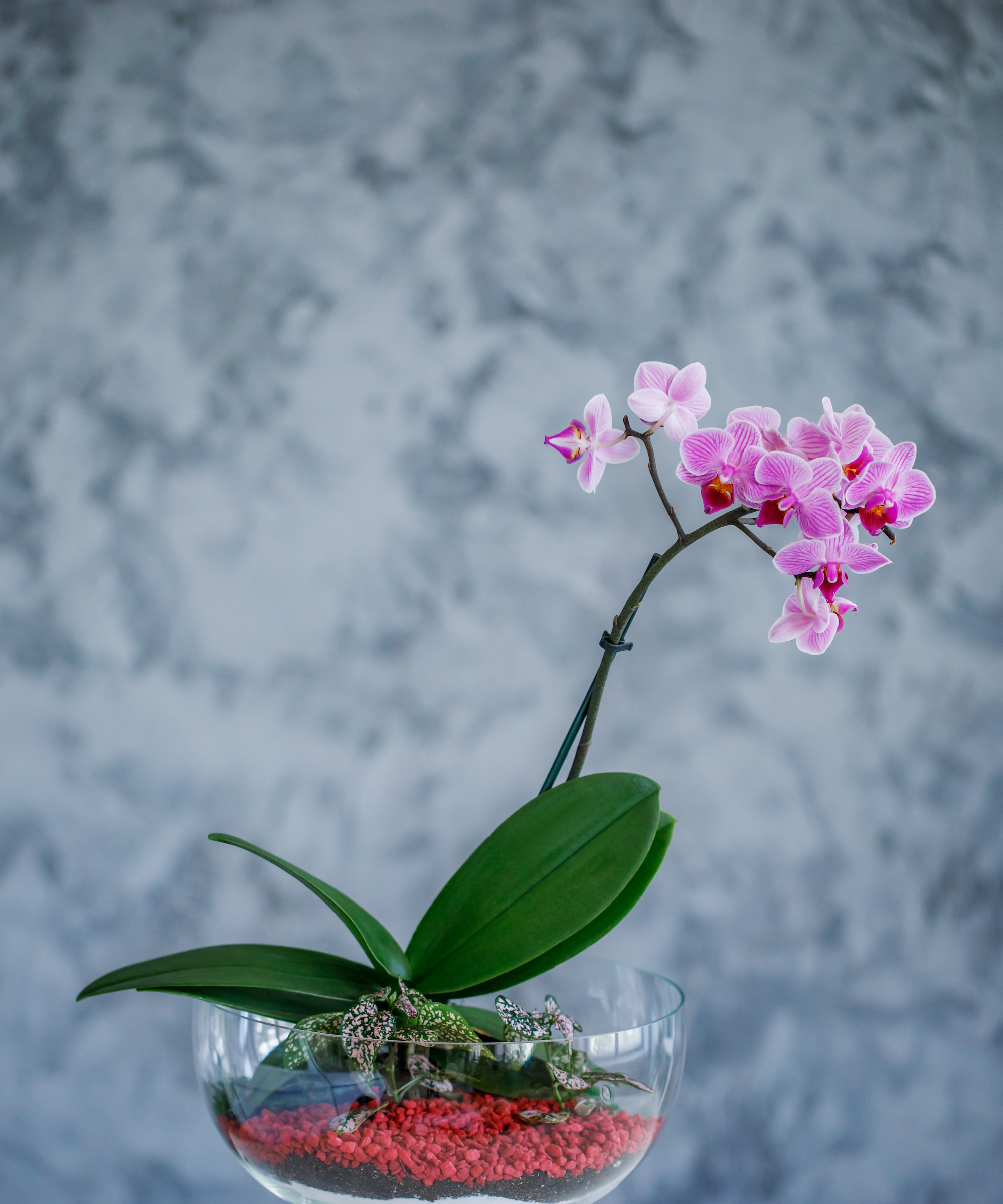
A key part of your terrarium care regime is making sure it's in the perfect location. It shouldn't be in direct sunlight because the glass will warm up, and the terrarium could become too hot and even cause the leaves to burn. Remember also that you may need to move your orchid terrarium around depending on the season.
If you plan to keep the terrarium near a window, leave a space between the window and the terrarium, so it isn't affected by any changes in outdoor temperatures which could damage your orchids. The correct temperature is essential for your orchid to bloom. If the window where the terrarium is located is chilly, the glass can easily become too cold.
'If you do not get a fluctuation of temperature at night, then your orchid will most likely not bloom,' says Anna Weston. 'Orchids require at least a 10 to 15˚F drop from their initial temperature at night to remove heat from their leaves. If your orchid grows in the same environment throughout the entire year without any changes it will start to display signs of heat stress.'
FAQs
What kind of container is best for orchid terrariums?
The ideal size and shape of the terrarium should be large enough to accommodate your orchid's root system and to allow for adequate air flow, as well as being spacious enough so plants aren't crowded.
Use a clear glass or plastic material that will provide plenty of light for your orchid while also keeping out pests and disease.
Can you grow Phalaenopsis orchids in a terrarium?
Yes, it is possible to grow Phalaenopsis orchids in a terrarium. The closed environment can help to maintain the humidity and temperature necessary for these hothouse plants.
Phalaenopsis, also known as moth orchids, are one of the indoor plants that flower all year round. They are easy to look after too, even in centrally heated rooms, which makes them the perfect choice if you're looking for ideas on how to make an orchid terrarium.
Orchid care can be a tricky business, even when growing them in the more controlled environment of a terrarium. Knowing how to properly fertilize and when to repot orchids, may also help you to keep yours healthy and in pristine condition.







